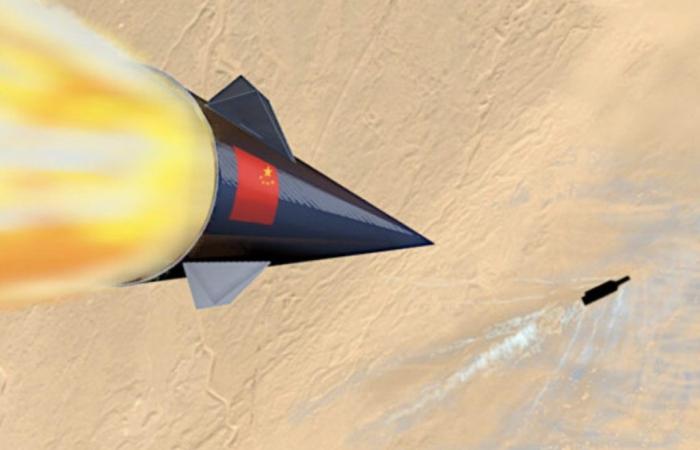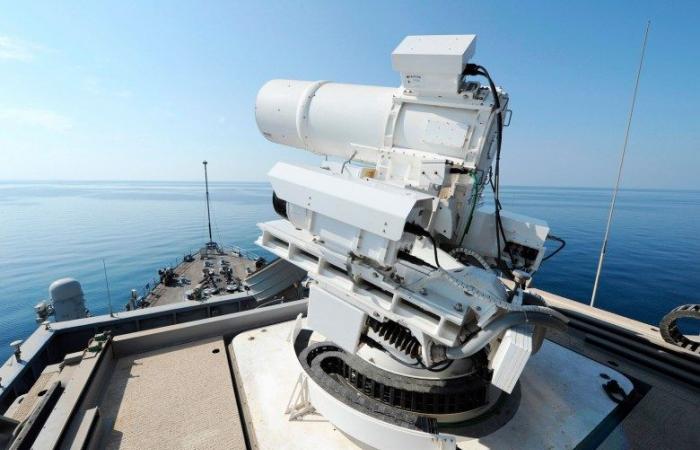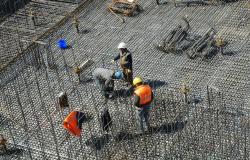China now has 369 satellites, three times as many as in 2018, according to General Stephen Whiting, head of the US Space Command.
“China and Russia,” Whiting told the Senate Armed Services Committee on February 29, are “moving breathtakingly fast.” He warned in particular about “counterspace” weapons that can destroy American satellites
With perhaps 3,000 advanced anti-ship missiles in its inventory and the capacity to hit moving targets at great distances, China now has an overwhelming firepower advantage in its home theater.
Nothing in the American arsenal can defend US military assets against massive barrages of Chinese missiles. That makes the buzzword “prioritize Asia” – sending more weapons to Taiwan rather than Ukraine – a matter of shifting the deck chairs to the other side of the Titanic.
China has underfunded its large land army and concentrated military spending on coastal defense.
The US national security establishment is struggling to maintain its credibility above water after the Ukrainian route last month at Avdeevka, where Ukrainian units refused orders to deploy in the besieged towns and Ukrainian soldiers reportedly bolted, leaving their wounded as well as their weapons behind.
Volodymyr Zelensky’s government now warns that its defense could crumble by next summer; in fact, this could happen much sooner as the beleaguered Ukrainians run short of artillery ammunition, air defense missiles and frontline manpower.
It’s hard to find a Western defense think tank that has not called on Washington to “prioritize Asia” during the past year. But China has such an overwhelming advantage in firepower, including ballistic and cruise missiles, that whatever additional weapons America might shift to Asia would have negligible impact.
As Brandon Weichert wrote in The National Interest on February 29, China’s “carrier killer” Dong Feng-26B intermediate-range ballistic missile can sink US aircraft carriers. Weichert estimates that China has 1,000 of these advanced systems.
Its inventory of cruise missiles is unknown but Chinese state media have published a video of automated factories producing cruise and anti-ship missile components, with one facility reportedly producing 1,000 missile engines per day. The Wall Street Journal reported on January 3 that it takes the US two years to make a cruise missile.
The Pentagon warned in its November 2022 assessment of the Chinese military that enhanced satellite coverage enabled China to target American surface ships at a range of 1,500 kilometers from its coast, rendering most of the US Navy vulnerable in any prospective confrontation. China’s satellite count at the time of that report had doubled since 2018.
Pentagon analysts wrote that the People’s Liberation Army Rocket Force’s ground-based missile forces complement the air and sea-based precision strike capabilities of the PLA Air Force and the PLA Navy. They added:
DF-21D has a range exceeding 1,500 kilometers, is fitted with a maneuverable reentry vehicle (MaRV) and is reportedly capable of rapidly reloading in the field.
The PLARF continues to grow its inventory of DF-26 IRBMs, which it first revealed in 2015 and fielded in 2016. The multi-role DF-26 is designed to rapidly swap conventional and nuclear warheads and is capable of conducting precision land-attack and anti-ship strikes in the Western Pacific, the Indian Ocean and the South China Sea from mainland China.
In 2020, China fired anti-ship ballistic missiles against a moving target in the South China Sea.
More satellites mean more precise targeting of Chinese missiles against surface targets.
The US Navy’s performance in recent operations against Houthi rebels in the Red Sea does not bode well for its survivability against Chinese missile forces that are orders of magnitude more powerful. In one case, the destroyer USS Gravely had to deploy its Phalanx Gatling guns to destroy a cruise missile only a mile – four seconds – from the ship.
China has the capacity to fire dozens of cruise missiles simultaneously at US targets, not to mention the more powerful DF series ballistic missiles, which rain down vertically from the stratosphere.
“The conventional arm of the PLARF is the largest ground-based missile force in the world, with over 2,200 conventionally armed ballistic and cruise missiles and with enough anti-ship missiles to attack every US surface combatant vessel in the South China Sea with enough firepower to overcome each ship’s missile defense,” Major Christopher Mihal wrote in The Military Review, a US Army journal, in 2021.
Some prominent US defense analysts argue that despite China’s massive missile advantage, US arms could still defeat a Chinese invasion of Taiwan. An example is former Deputy Assistant Secretary of Defense Elbridge Colby, a prominent Asia-prioritizer.
He might just as well say that the US could stop an invasion of moon men by dusting the Washington Monument with confectioner’s sugar. China is not stupid enough to mount a D-Day-style invasion of Taiwan across 70 miles of the Taiwan Strait.
It could blockade the island with little effort, as it did for two days in August 2022 when then-House Speaker Nancy Pelosi conducted a sort-of state visit. Taiwan has less than two weeks’ storage capacity for natural gas. A Chinese missile strike on an LNG carrier bound for Taiwan would potentially turn out the lights.
A Chinese blockade of Taiwan, to be sure, would risk confrontation with the US, and might prompt a counterblockade of oil tankers headed to China, followed by a counter-counter-blockade of oil headed for South Korea and Japan. China produces 80% of its BTUs with domestic energy sources.
South Korea and Japan have next to no domestic energy sources. The same and worse would happen if China invaded.
For the US to regain the advantage around China’s coast would require a massive investment in missile defense, including directed energy weapons. Hypersonic missiles cannot be stopped by ordinary missile defense because the attacking missile flies as fast as the pursuing missile.
Lasers are effective against slow-moving targets like drones but not against missiles speeding at Mach 5. Washington would have to commit to a multi-year R&D program costing hundreds of billions of dollars with an uncertain outcome.
That in effect is how the US responded to the Soviet advantage in air defense firepower, demonstrated during the 1973 Arab-Israeli War. It succeeded then but there is no guarantee of success in any such program.
Congress is in no mood to increase government spending given the explosion of federal debt during the Covid slump. Politicians and defense wonks, though, have to look like they are doing something useful. Shifting the deck chairs away from the Ukraine side of the Titanic is the most credible plot at their disposal.
Follow David P Goldman on X, formerly Twitter at @davidpgoldman







